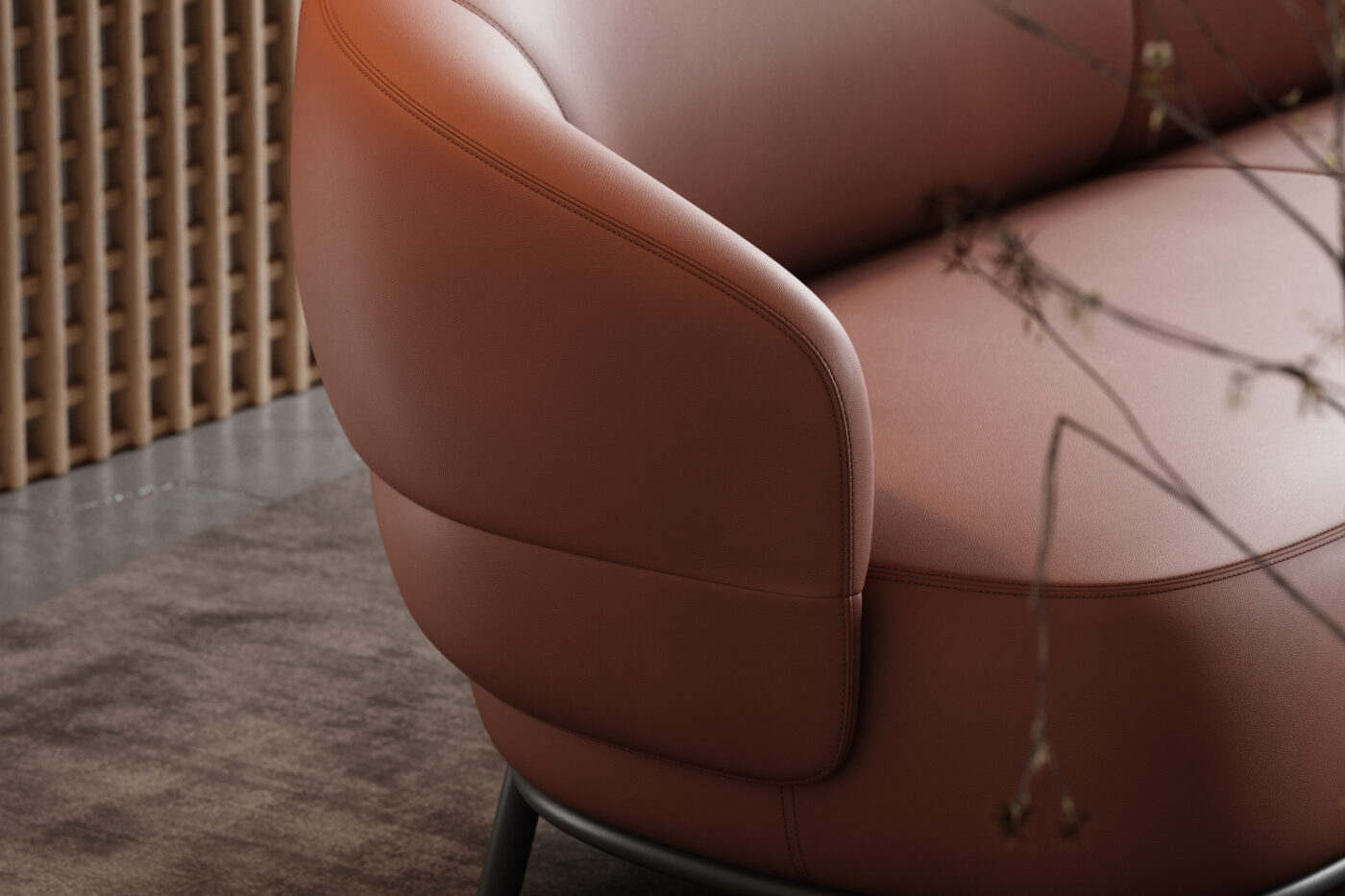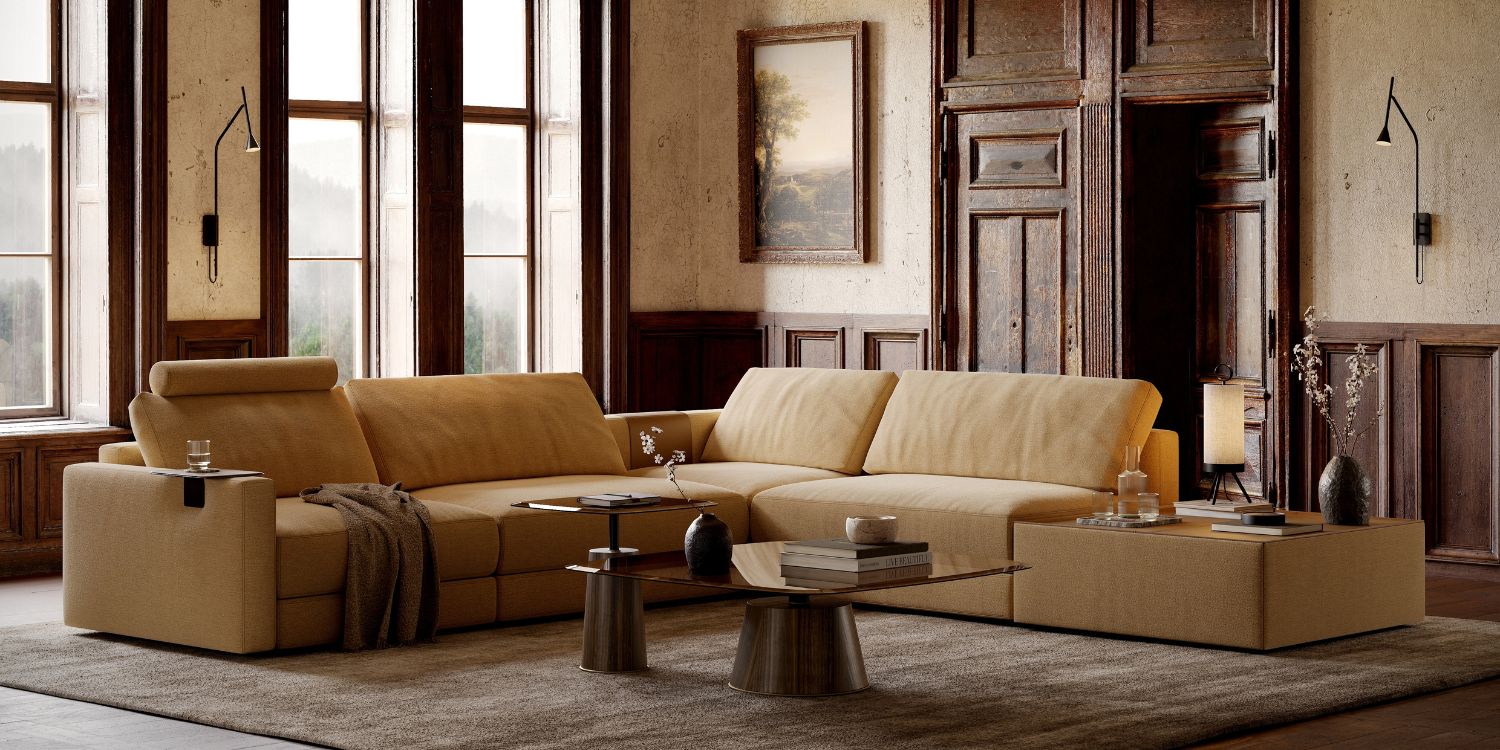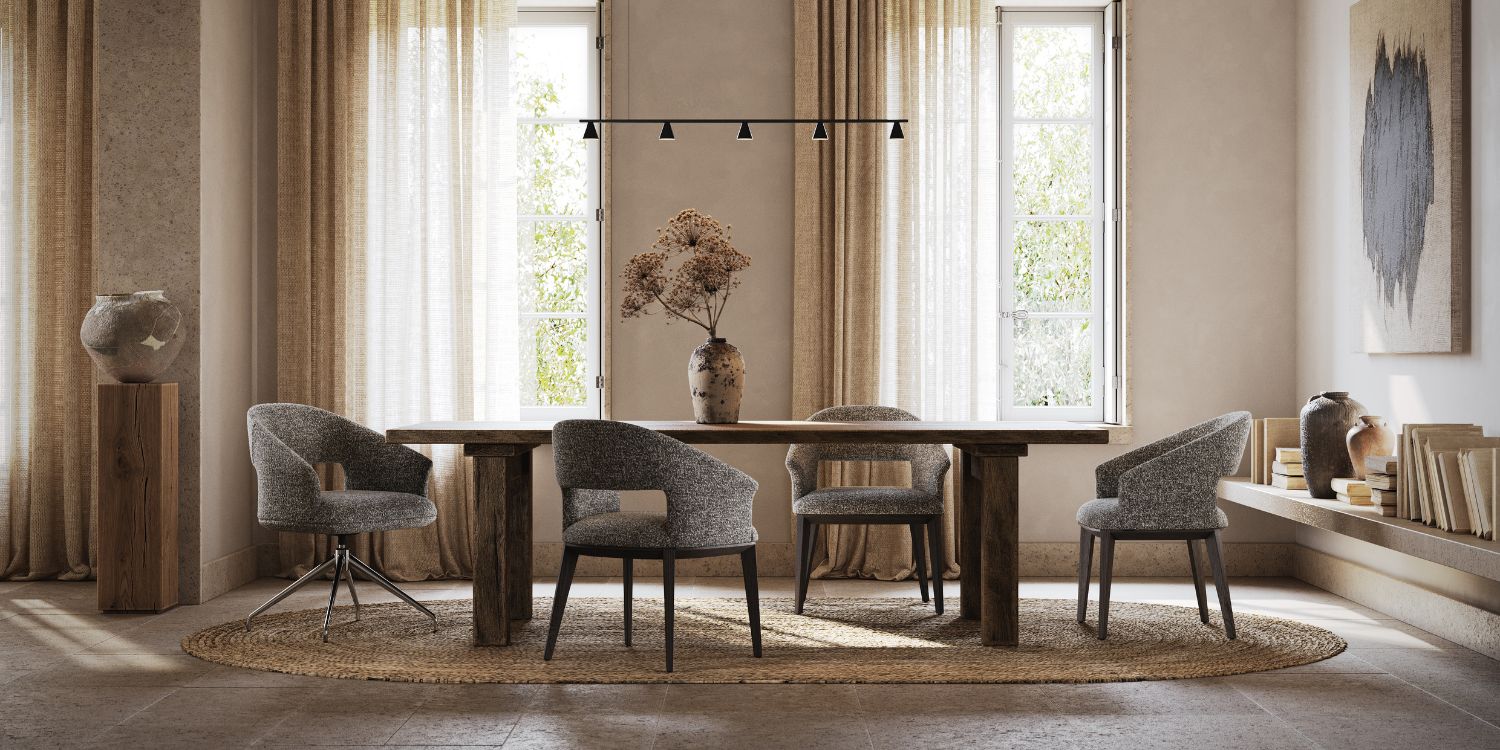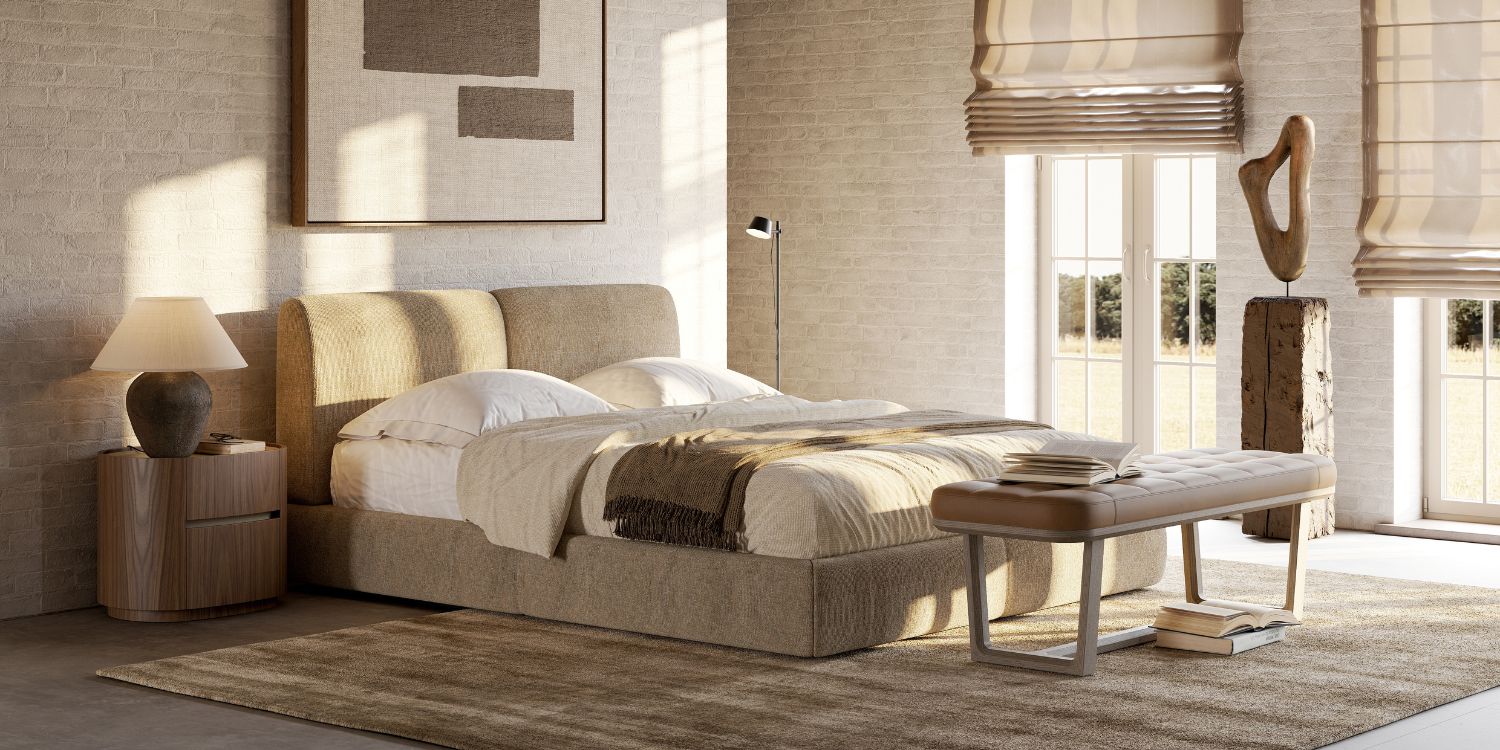Small details often make the most significant difference in interior and furniture design. Subtle accents like piping and stitching can elevate even the simplest furniture pieces, lending an air of refinement, craftsmanship and personality. In fact, for interior designers looking to add a bespoke touch to their upholstery choices, these techniques offer a powerful yet understated way to enhance a space.
At Domkapa, stitching and piping aren’t merely functional—they’re essential elements that contribute to a piece’s character and sophistication. Keep reading to discover the different types of stitching we offer and explore how each technique can shape the aesthetic and tactile quality of upholstered furniture.
1. Top Stitching
The top stitching is a minimal but effective technique that provides a polished, tailored line along the edges or seams. It highlights the form of a piece without overpowering it, making it ideal for sleek, contemporary furniture designs.
You can find this technique, for instance, in the armrests and seat of our Ruth Armchair, which enhances its durability and adds a touch of slender sophistication.

2. Double Top Stitching
With a double line of stitches running parallel, double top stitching is a step up from standard top stitching, offering a bolder statement. This technique adds subtle depth to the fabric, emphasising the craftsmanship and structure of the piece while maintaining an elegant restraint.
In our Juliet Sofa, the double top stitching on the elegant armrests and backrest defines its soft curves and balances its proportions.

3. Double Top Stitching Piped
The Double top stitching piped combines the double-stitching technique with piping, adding both texture and a defined edge. This fusion is ideal for designs where attention to detail and durability are paramount, as it enhances the strength and the aesthetic appeal of the piece.
The perfect example of this technique is our Grant Pouf. It features elegant double top stitching piping along the edges and contrasts piping encircling the piece for a polished, classic look.

4. Double Top Stitching Spaced
This stitching style is similar to standard double top stitching but with a deliberate space between the two lines. This technique is perfect for pieces intended to feel casual yet well-crafted, as the spacing provides a laid-back touch without compromising sophistication.
Our Shelby Bed has double top stitching spaced in its upholstered headboard and you can customise it by selecting a different fabric for the space inside!

5. Invisible Stitching
Invisible stitching is a discreet technique that hides the stitches within the fabric itself, creating a smooth, uninterrupted surface. It’s perfect for contemporary and minimalist designs where every line should flow effortlessly, letting the form of the piece speak for itself without visible seams.
For instance, Kate Pouf‘s clean, versatile lines make it a seamless addition to any room, easily paired with other furnishings for an understated, harmonious look.

6. Piping
Piping involves adding a slender cord along the edge of cushions, arms or backs, which not only strengthens the seam but also accentuates the shape of the furniture. It’s an excellent way to add a touch of refinement, especially on classic or transitional pieces.
Sleek piping flows across our Shinto Sofa to complete an exclusive design with great functionality and comfort.

7. Zig-Zag Stitching
Zig-zag stitching offers a unique texture, creating a lively, eye-catching pattern that’s ideal for adding personality to more casual or eclectic spaces. This stitching style brings an artisanal feel to upholstery, subtly breaking away from traditional straight stitches to create movement and interest.
Our Frank Chair features clean, straight lines and it incorporates an elegant cross-stitching detail on the backrest, adding a touch of sophistication to the overall ambience.

8. Cross Stitching
Cross stitching is a decorative option that adds a handcrafted, vintage feel to furniture. The crisscrossing lines are both beautiful and sturdy, making this technique well-suited to accent furniture in cosy, rustic or bohemian-inspired spaces.
The fabric or leather of our Alexander Armchair is finished with a distinctive cross-stitched seam, enhancing the chair’s unique aesthetic and craftsmanship.

9. Blanket Stitching
This technique uses larger, visible stitches along the edge of a piece, giving it a distinctly handcrafted, rugged look. It’s perfect for pieces that aim to bring warmth and texture to a room, such as armchairs or sofas with a relaxed, lived-in appeal.
Olivia Sofa, the latest addition to Domkapa’s collection of modular designs, has the Blanket stitching around its rounded seat, offering a cohesive and elegant look.

Choosing the Right Technique for Your Project
With these techniques, Domkapa’s furniture collection offers interior designers the chance to truly customise their choices, using stitching and piping to add a personal, thoughtful touch to each piece. The result is furniture that doesn’t just fill a room but enhances it, transforming the space with an eye for detail and a respect for craftsmanship.
- For contemporary spaces: invisible stitching and top stitching offer a clean, sophisticated look that won’t distract from the overall aesthetic.
- For traditional or transitional spaces: double top stitching piped and piping lend a classic, tailored feel to any piece.
- For casual, cosy interiors: cross stitching, blanket stitching and double top stitching spaced bring a warm, handcrafted quality to the furniture.
By thoughtfully selecting the stitching and piping styles that best complement a project’s design goals, interior designers can create cohesive, inviting interiors where every detail matters. So, next time you’re selecting upholstered furniture, consider how these finishing touches can add an extra layer of sophistication and character to your project!
YOU MAY ALSO LIKE: Industrial Interior Design 101: Essential Tips To Embrace This Raw Aesthetic
We are working every day to bring you the most stylish ideas to fulfil your inspiration and to create the best interior design projects so feel free to follow our Instagram Page and subscribe to our newsletter.























